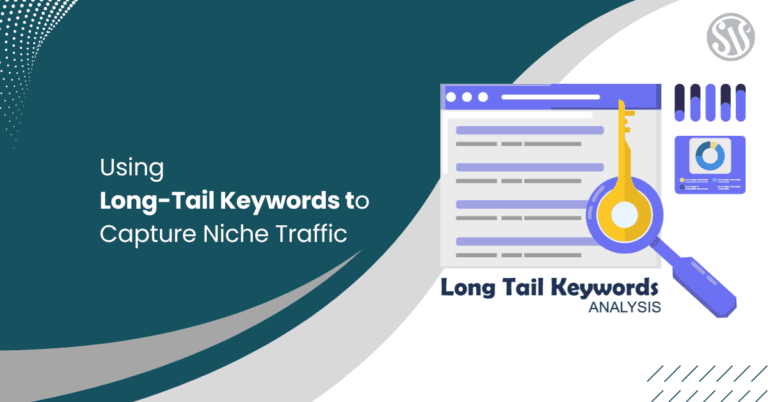The Impact of Site Architecture on SEO Rankings
Site architecture is often the unsung hero in the world of SEO, quietly powering how search engines crawl, index, and rank your website. In this comprehensive guide, we explore every facet of site architecture, its direct impact on SEO rankings, and practical strategies for creating a site that not only delights your users but also pleases search engines.
Whether you’re a marketer, web developer, or business owner, this post will provide actionable insights and detailed best practices to help unlock your website’s full potential. By the end of this guide, you’ll have a clear roadmap to optimize your site’s structure, boost your SEO rankings, and drive more organic traffic.
Why Site Architecture Matters for SEO
Site architecture isn’t just a technical detail reserved for web developers; it’s a foundational element of any successful SEO strategy. Essentially, it refers to how a website’s pages are organized, interlinked, and structured. When your site’s architecture is logical and intuitive, search engines can quickly crawl, index, and understand the context of each page.
Search engine bots rely on clear navigational paths to discover your content. A well-structured site ensures every significant page gets noticed and provides a seamless user experience. Enhanced usability leads to lower bounce rates, longer session durations, and better SEO performance.
Understanding Site Architecture
Understanding the basics of site architecture is the first step toward leveraging it for SEO success. This section will define site architecture and explore its fundamental components.
Before diving into specific details, it’s essential to grasp the overall concept: site architecture is essentially the blueprint of your website. It dictates how content is organized, how pages connect, and how users and search engines navigate your site. With that foundation in place, we can explore the building blocks that make up effective site architecture.
What is Site Architecture?
Site architecture refers to the structured organization of a website’s pages, including its hierarchy, navigation menus, URL structure, internal linking, and sitemaps. This blueprint determines how users interact with your site and how search engine bots discover and rank your content.
When designed correctly, it helps ensure that every critical page is accessible, link equity is distributed effectively, and search engines can understand the relationships between different pieces of content.
Key Elements of Site Architecture
A well-structured website is built on several key elements that work together to create a seamless user experience and to support SEO efforts. In this section, we’ll explore these critical components in detail.
First, we will look at how navigation and user experience play a pivotal role, and then we will discuss the significance of URL structure, internal linking, and sitemaps.
Navigation and User Experience
Navigation forms the backbone of a website’s architecture. It’s the primary method by which users and search engine bots explore your site. A clear and intuitive navigation system helps visitors find the information they need quickly, reducing frustration and bounce rates while boosting engagement.
Best Practices for Navigation
- Keep It Simple: Label menu items clearly and descriptively to avoid overwhelming your visitors with too many options.
- Maintain Consistency: A consistent navigation structure across all pages helps users know where they are and how to get to other content.
- Responsive Design: Ensure navigation works seamlessly on all devices, desktop, tablet, and mobile.
- Use Drop-Down Menus Wisely. Drop-down menus can help organize content and avoid too many nested levels, confusing users and search engines.
URL Structure
Moving from navigation, the next critical component is your URL structure. Clean and descriptive URLs do more than just serve as addresses for your pages, they communicate to users and search engines what the page is about.
Characteristics of SEO-Friendly URLs
- Descriptive: A good URL provides clear insight into the page’s content.
- Concise: Avoid long, complex URLs that confuse users or appear spammy to search engines.
- Keyword-Rich: When appropriate, include target keywords, but avoid over-optimization.
- Static vs. Dynamic: Static URLs are generally more SEO-friendly than dynamic URLs loaded with parameters.
Internal Linking
Internal linking is another key aspect of site architecture after addressing URL structure. This practice helps distribute link equity throughout your site, ensuring that even deeper pages receive the authority they deserve.
Tips for Effective Internal Linking
- Use Descriptive Anchor Text: Instead of generic “click here” links, use text that clearly describes the destination page.
- Link to Related Content: Group related topics through internal links to encourage deeper exploration.
- Logical Structure: Ensure every page is accessible within a few clicks from your homepage.
- Fix Broken Links: Regularly audit your site to correct any broken links that could disrupt user experience and harm SEO.
Sitemaps
Finally, the sitemap is a vital component that ties together all the aforementioned elements. Sitemaps are a comprehensive guide for search engines, helping them locate and index every critical page on your site.
Types of Sitemaps
- XML Sitemaps: Specifically designed for search engines, these sitemaps list every URL on your website.
- HTML Sitemaps: Created for users, these sitemaps provide an organized overview of your site’s structure, aiding in quick navigation.
How Site Architecture Influences SEO Rankings
Site architecture isn’t just about organization, it directly influences your website’s performance in search engine rankings. This section will examine how efficient crawling, enhanced user experience, and strategic link equity distribution are tied to your site’s structure.
We’ll also discuss the technical SEO aspects that benefit from a sound architectural foundation.
Efficient Crawling and Indexing
One of the primary functions of a well-designed site architecture is to facilitate the efficient crawling and indexing of your pages by search engine bots. When your content is organized logically and linked effectively, bots can quickly navigate through your site, discovering and indexing new and updated pages without difficulty.
Factors Affecting Crawling and Indexing
- Site Depth: Pages buried too deep within your site hierarchy may be deemed less necessary by search engines.
- Internal Linking: A robust internal linking strategy ensures that bots can easily traverse your site.
- Duplicate Content: Poor site structure can lead to duplicate content issues, diluting ranking signals and confusing search engines.
Enhanced User Experience
UX has become a critical factor in SEO. A website that is easy to navigate, loads quickly, and offers clear pathways to information is more likely to keep visitors engaged. This engagement sends positive signals to search engines, contributing to improved rankings.
How UX Affects SEO
- Reduced Bounce Rates: Clear navigation and fast load times keep users from bouncing away quickly.
- Increased Time on Site: Engaging content and intuitive design keep users exploring multiple pages.
- Improved Conversion Rates: An organized site directs users toward conversion paths, such as signing up for a newsletter or purchasing a product.
Link Equity Distribution
Internal linking helps with crawling and distributes link equity throughout your site. When high-authority pages link to less visible pages, they pass on valuable ranking power, which can boost those pages’ performance.
The Role of Link Equity
- Boosting Page Authority: Strategic internal links can help underperforming pages gain additional ranking power.
- Improved Crawl Efficiency: Proper link equity distribution ensures that every page is valued and crawled by search engines.
- Contextual Relevance: Using descriptive anchor text in internal links clarifies page relationships, enhancing topical relevance.
Technical SEO and Site Architecture
Technical SEO components, like mobile optimization, page speed, and structured data, are deeply intertwined with your site’s architecture. A well-architected site not only makes these technical improvements more straightforward to implement but also ensures that they deliver maximum SEO benefit.
Key Technical Considerations
- Mobile-First Indexing: As more users access the Internet on mobile devices, ensuring your site is fully responsive is critical.
- Page Speed: A lean, efficiently coded site with optimized images leads to faster load times—a known ranking factor.
- Structured Data: Implementing schema markup helps search engines understand your content context, leading to enhanced search result features.
Crafting an SEO-Friendly Site Architecture
Once you understand the impact of site architecture on SEO, the next step is putting theory into practice. This section outlines the planning, implementation, and ongoing monitoring required to build and maintain an SEO-friendly site architecture.
Planning and Strategy
Before you make any changes, it’s essential to have a clear strategy. Start by understanding your target audience, mapping out your key content areas, and defining the overall hierarchy of your site.
Steps to Develop a Robust Plan
- Conduct a Content Audit: Review your existing content to assess performance, relevance, and structure.
- Define Your Goals: Set clear objectives for increasing traffic, boosting conversions, or enhancing user engagement.
- Map Out Your Hierarchy: Create a visual sitemap that outlines the organization from the homepage to subcategories and individual pages.
- Identify Key Landing Pages: Determine which pages should receive the most emphasis and how they will be linked internally.
Implementing the Architecture
With a solid plan, it’s time to implement your new site architecture. Whether you’re building a new site or overhauling an existing one, focus on creating a logical and scalable structure.
Implementation Best Practices
- Responsive Design: Ensure your site is mobile-friendly and adapts to various devices.
- Consistent Navigation: Utilize uniform menus and breadcrumbs so users always know where they are.
- Clean URLs: Develop a URL structure that is simple, descriptive, and keyword-optimized.
- Leverage Plugins: WordPress users can use SEO plugins that help generate XML sitemaps, manage breadcrumbs, and optimize internal linking.
Monitoring and Adjustments
SEO is an ongoing process. Once your new site architecture is in place, continuous monitoring and adjustments are necessary to ensure sustained success.
Tools and Techniques for Monitoring
- Google Search Console: Monitor crawl errors, indexing issues, and overall site performance.
Analytics Platforms: Use tools like Google Analytics to track user behavior, engagement metrics, and conversion rates. - SEO Auditing Tools: To identify and fix potential issues, regularly run audits using tools such as Screaming Frog, Sitebulb, or SEMrush.
The Role of Mobile Optimization and Responsive Design
Mobile optimization isn’t optional; it’s a necessity. This section explores how mobile-first indexing and responsive design significantly influence SEO rankings and overall user experience.
Mobile-First Indexing
Google’s shift to mobile-first indexing means that the mobile version of your website is considered the primary version for indexing and ranking. This change makes it imperative that your site offers a seamless mobile experience.
Key Considerations for Mobile Optimization
- User Interface (UI): Ensure that buttons, links, and navigation elements are easily clickable on mobile screens.
- Content Readability: Choose fonts, spacing, and layouts that enhance readability on smaller screens.
- Performance: Optimize images, minify code, and utilize caching to improve mobile load times.
Responsive Design Strategies
Responsive design ensures that your website adapts to various screen sizes and resolutions. This benefits mobile users and creates a consistent experience across all devices.
Strategies for Effective Responsive Design
- Fluid Grids: Employ fluid grid layouts that adjust seamlessly based on screen size.
- Flexible Media: Ensure images, videos, and other media elements scale appropriately.
- Media Queries: Use CSS media queries to apply different styling rules based on device characteristics.
- User Testing: Regularly test your site on multiple devices to catch and correct usability issues.
URL Structure and Navigation: The Backbone of Site Architecture
The interplay between URL structure and navigation is crucial to effective site architecture. This section will explore how clear URLs and breadcrumb navigation contribute to SEO by guiding users and search engine crawlers.
Importance of a Clean URL Structure
A well-crafted URL does more than point to a location—it conveys meaning and context about the page’s content. A clear and concise URL structure enhances both SEO and user trust.
Best Practices for URLs
- Keep It Simple and Descriptive: Use language that accurately describes the content.
- Include Keywords: Incorporate relevant keywords naturally without overstuffing.
- Avoid Special Characters: Simplify your URLs by eliminating unnecessary symbols or parameters.
- Maintain Consistency: A uniform format across your site boosts usability and SEO.
The Role of Breadcrumb Navigation
Breadcrumbs serve as secondary navigation aids, showing users their location within the site’s hierarchy and providing quick access to higher-level pages. They also help search engines understand your site’s structure.
Benefits of Breadcrumbs
- Enhanced User Experience: They provide an intuitive path back to key sections of your site.
- Improved Indexing: Breadcrumbs help search engines discern the structure and relationship between pages.
- Additional Internal Linking: They contribute extra internal links that can pass on valuable link equity.
Technical SEO Considerations
Technical SEO involves the nuts and bolts of your site architecture. In this section, we’ll examine how aspects such as site speed, structured data, and security are influenced by and can be improved by, a robust architecture.
Site Speed and Performance
A fast-loading website is critical for both user satisfaction and search engine rankings. Optimizing site speed often starts with a clean architecture that minimizes unnecessary code and optimizes media.
Strategies to Enhance Site Speed
- Image Optimization: Compress images and consider modern formats like WebP.
- Minify Code: Reduce file sizes by minifying CSS, JavaScript, and HTML.
- Content Delivery Networks (CDNs): CDNs deliver content rapidly across the globe.
- Caching: Implement both browser and server-side caching for faster repeat visits.
Structured Data and Schema Markup
Structured data, implemented via schema markup, provides search engines with detailed information about your content. This can lead to rich snippets in search results, potentially increasing click-through rates.
Implementing Structured Data
- Identify Key Content: Mark up articles, products, reviews, and other essential elements.
- Follow Schema.org Guidelines: Use standardized schemas for compatibility with major search engines.
- Test Your Markup: Regularly validate your schema markup with tools like Google’s Structured Data Testing Tool.
Secure and Accessible Websites
Security is another pillar of technical SEO. A secure website using HTTPS builds trust with users and is favored by search engines. Accessibility improvements ensure your site reaches the widest audience possible.
Security and Accessibility Tips
- Implement HTTPS: Secure your site with an SSL certificate.
- Optimize for Accessibility: Use proper HTML tags, alt text, and design for users with disabilities.
- Regular Audits: Conduct periodic audits to identify and resolve security or accessibility issues.
Tools to Evaluate and Optimize Site Architecture
Building and maintaining a robust site architecture requires regular evaluation and optimization. In this section, we’ll review the tools that can help you analyze your structure, monitor performance, and ensure that your website remains optimized for users and search engines.
SEO Auditing Tools
Several powerful tools, such as Screaming Frog and Semrush, provide detailed insights into your site’s structure. These tools can help you identify broken links, duplicate content, and navigational inefficiencies.
Benefits of SEO Auditing Tools
- Comprehensive Analysis: Understand the technical and structural performance of your site.
- Actionable Insights: Receive recommendations for improvements that boost SEO.
- Progress Tracking: Monitor changes over time and adjust strategies accordingly.
Google Search Console and Analytics
Google Search Console is invaluable for monitoring your website’s indexing status and performance, while Google Analytics provides detailed insights into user behavior and engagement.
Key Metrics to Monitor
- Crawl Errors: Identify pages that are not being crawled or indexed.
- User Behavior: Track bounce rates, session durations, and conversion paths.
- Mobile Performance: Ensure your site is performing optimally on all devices.
Content Management Systems (CMS) and Plugins
For WordPress users, a host of plugins, like Yoast SEO and All in One SEO Pack, can assist in managing their site’s architecture. These plugins simplify tasks such as generating XML sitemaps, managing breadcrumbs, and optimizing internal links.
Best Practices and Strategies for Optimizing Site Architecture
Optimizing site architecture is an ongoing endeavor. In this section, we outline best practices and strategies that you can adopt to ensure your site remains agile, efficient, and aligned with SEO best practices.
Regular Site Audits
Regular site audits are essential to keeping your website in optimal shape. Audits help you identify issues early, be they broken links, inefficient navigation, or duplicate content, and provide the opportunity to make timely adjustments.
Steps for a Successful Audit
- Analyze Site Structure: Review your navigation, URL hierarchy, and internal linking.
- Check Internal Links: Ensure every link works and contributes to a coherent site structure.
- Review Page Performance: Identify pages with slow load times or high bounce rates.
- Update Sitemaps: Keep both XML and HTML sitemaps current to reflect changes.
Content Strategy and Organization
A well-organized content strategy is a natural extension of a strong site architecture. Group related content into clusters, use consistent categorization and ensure your posts are linked to building thematic relevance.
Content Organization Tips
- Create Topic Clusters: Group related articles and pages to establish authority on core topics.

- Use Tags and Categories: Develop a consistent system for categorizing content.
- Regularly Update Content: Refresh and expand existing content to maintain relevance and authority.
Future-Proofing Your Architecture
The digital landscape is ever-changing. Future-proof your site by building a flexible architecture that can adapt to new technologies, search engine algorithm updates, and evolving user behaviors.
How to Future-Proof
- Modular Design: Use a modular approach to add, remove, or rearrange content easily.
- Stay Informed: Keep up with SEO trends, algorithm updates, and technological advancements.
- User-Centric Approach: Prioritize user experience—after all, search engines continue to favor sites that genuinely meet user needs.
Future Trends in Site Architecture and SEO
As technology evolves and user behavior shifts, the relationship between site architecture and SEO continues to change. In this section, we explore emerging trends and how they will shape the future of digital marketing.
Voice Search and Conversational Navigation
Voice search is rising, with users increasingly relying on conversational queries. This shift demands a site architecture that supports natural language and easy navigation. Websites that adapt their content to be voice-friendly will likely gain an edge in search rankings.
Artificial Intelligence and Machine Learning
AI and machine learning transform how search engines understand content and user intent. A clearly structured site provides the signals these advanced algorithms need to rank your content accurately. As AI becomes more sophisticated, websites with robust architectures will be better positioned to adapt to evolving ranking factors.
The Increasing Importance of Core Web Vitals
Core Web Vitals, metrics that measure loading performance, interactivity, and visual stability, are becoming critical ranking signals. A clean, efficient site architecture naturally supports these metrics, ensuring that your website performs technically well and delivers a satisfying user experience.
Progressive Web Apps (PWAs) and Enhanced User Experiences
Progressive Web Apps blend the best web and mobile app experiences, offering seamless, fast, and engaging interactions. As PWAs become more prevalent, integrating them into your site’s architecture can lead to better user retention and improved SEO metrics.
Conclusion: Building a Future-Proof Site Architecture
Site architecture is more than just an organizational tool; it’s the backbone of your website’s SEO performance. As search engines evolve and user expectations change, the importance of maintaining a clean, responsive, and user-centric architecture will only grow.
Investing time and resources into building an SEO-friendly site architecture is an investment in the long-term success of your online presence. Whether starting from scratch or overhauling an existing site, the strategies outlined in this guide provide a roadmap for achieving better rankings and increased organic traffic.







